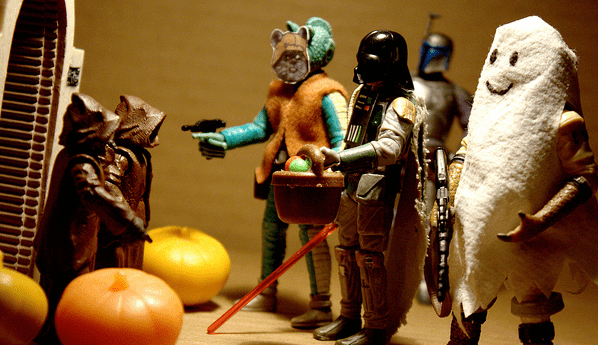
UPDATE: This afternoon, as my children and I continued to discuss whether it was okay to trap another creature, they decided that instead of a trap, they wanted to build a hotel for the leprechaun. And to provide robots with the hotel so the leprechaun wouldn’t be lonely. So maybe it’s a reach how I critique the traps, but I’m happy as hell with what they wound up grabbing onto. Hospitality beats slavery and stealing every time.
Today, thousands — if not millions — of elementary school children learned that it was okay to trap and capture another sentient creature as long as it’s in the pursuit of wealth and treasure.
If you are the parent of a young elementary school student, chances are you spent at least part of the past few evenings throwing together the ever-popular “leprechaun trap” as part your child’s homework for St Patrick’s Day.
It’s supposed to be a bit of fun, I suppose, but there was something terribly disturbing about planning with my five-year-old how he would trap another person (leprechauns appear less like magical fairy creatures and more like humans in popular culture these days) so that we could force that person to use his power to make us rich and grant us our economic wishes.
So, let’s get this lesson straight. We are basically teaching our children that you can do just about anything — even enslave someone — as long as it’s for money and good luck. In other words, St. Patrick’s Day in many elementary school culminates with a veiled celebration of slavery and the wealth it affords slavers.
Apparently all I ever I needed to know about life capitalism I learned in kindergarten.
Of course, there is some accuracy to this innocent homework assignment for St. Patrick’s Day. Legend says Patrick himself was a slave. Of course, that’s likely not true, and some research suggests that Patrick himself might well have been a slave trader. Whatever the case, slavery has long been associated with Patrick.
Still, I really don’t want my kids going around thinking that trapping, enslaving, and stealing is in any way acceptable. While I seriously considered opting out of the assignment on religious grounds, we used the homework assignment as a way to teach why it wasn’t okay to capture people, and why people didn’t really think twice about whether we really should be setting traps for others in order to take their treasures.
I know. Major buzzkill.
But it bears remembering that what I’ve just described is essentially the story of the United States, and how it rose to economic power and wealth in the world on the backs of primarily African slaves. So embedded in our culture is the idea that’s it is morally acceptable to capture and enslave for one’s own gain that, under the guise of simple, naive fun, we give our most impressionable children homework assignments suggesting and reinforcing the idea.
Personally, if we want to offer a lesson on the pursuit of wealth on St. Patrick’s Day, I much prefer my own childhood understanding of chasing down a leprechaun.
See, I always understood that the leprechaun was at the end of the rainbow with a pot of gold, and if you ever got to the end of the rainbow, the leprechaun would give you his gold. I never thought to capture a leprechaun but to chase one. Of course, the life lesson became clear if you ever tried to find the end of the rainbow, as we once did.
Because you can never get to the end of the rainbow to find the pot of gold.
The end of the rainbow is a mirage.
It’s all an illusion, that pursuit of wealth.
It’s all an illusion, that notion that if we work hard enough and chase long enough we can be rich.
It’s all an illusion, this myth of American Dream.
As it turns out, it’s not leprechauns we’re trapping.
It’s ourselves.
















